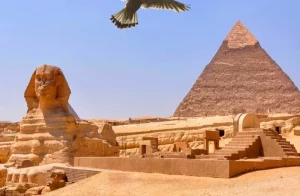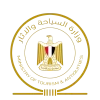Useful Facts about Egypt
At first, Egypt has 29 governorates. In arabic, Muhafaza means governorate. Secondly, Each governorate administrated by a governor and regional assembly. These governorate are: Al Daqahliyah, Al Bahr al Ahmar (Red Sea), Al Buhayrah, Al Fayyum, Al Gharbiyah, Al Iskandariyah (Alexandria), Al Isma’iliyah (Ismailia), Al Jizah (Giza), Al Minufiyah, Al Minya, Al Qahirah (Cairo), Al Qalyubiyah, Al Uqsur (Luxor), Al Wadi al Jadid (New Valley), As Suways (Suez), Ash Sharqiyah, Aswan, Asyut, Bani Suwayf, Bur Sa’id (Port Said), Dumyat (Damietta), Ganub Sina’ (South Sinai), Kafr ash Shaykh, Matruh, Qina, Shamal Sina’ (North Sinai) and Suhag.
Climate of Egypt
Most of Egypt is a dry area. For instance, the southern part of Upper Egypt has a semi-desert climate. Likewise, The North has a Mediterranean climate. The temperature sinks quickly after sunset because of the high radiation rate under cloudless skies. Hence, the outdoors are hot in summer. Annual rainfall averages 2.5 to 3.0 cm (1 in) south of Cairo and 20 cm (8 in) on the Mediterranean coast. Often, sudden storms may cause devastating flash floods. In the spring, hot and dry sandstorms khamsins come off the Western Desert. Moreover, Cairo has average temperatures range from 14°c (57°f) in January to 36°c (96°f) in July. Relative humidity varies from 68% in February to over 70% in August and 77% in December.
Religion in Egypt
Mainly, about 90% of Egyptians are Muslim Sunni. As Islam dominates Egyptian society. Otherwise, about 10% of Egyptians are Christian Copts, one of the oldest branches of the Christian. The Coptic Orthodox Church is the largest Christian denomination. Other denominations represented include The Roman Catholic, the Armenian Apostolic, Greek, and Syrian Orthodox, Catholics (including Armenian, Chaldean, Greek, Melkite, Roman, and Syrian), and a variety of evangelical Protestant denominations. The Baha’i faith is also represented. However, the Jewish community is extremely small.






